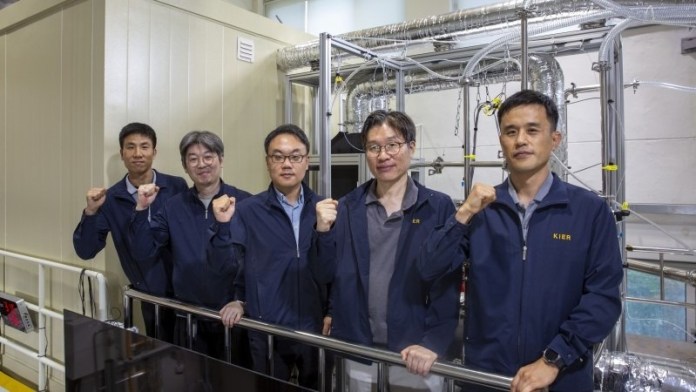- The ability to replace high-GWP refrigerants with air not only addresses the immediate environmental concerns associated with traditional cooling systems but also aligns with global efforts to combat climate change.
- New refrigeration technology not only mitigates harmful effects of global warming but also sets a precedent for future innovations in energy efficiency and sustainability.
Global warming represents one of the most pressing challenges of our time, driven primarily by the accumulation of greenhouse gases in the atmosphere.
Among the various contributors to this phenomenon, refrigerants—particularly those with high global warming potential (GWP)—have emerged as significant culprits.
The conventional refrigeration and air conditioning systems that utilise these harmful substances have come under increasing scrutiny as the world grapples with the urgent need for sustainable practices.
In a groundbreaking development, researchers from the Korea Institute of Energy Research (KIER) have pioneered a new refrigeration technology that utilises air as a refrigerant, offering a promising alternative to traditional high-GWP refrigerants such as hydrofluorocarbons (HFCs) and Freon.
Eco-friendly refrigerants
The traditional approach to refrigeration has predominantly relied on the vapour compression cycle, a method that has served industries for decades due to its simplicity and effectiveness.
In this cycle, a liquid refrigerant evapourates, absorbing heat and thereby cooling the surrounding environment. While this method has been widely adopted across various sectors, it comes with a significant drawback: its reliance on fluorinated greenhouse gases, which are known to have a devastating impact on global warming.
The urgency to transition away from these harmful substances has been underscored by recent regulatory changes, particularly the European Union’s revised regulation on fluorinated greenhouse gases that took effect in March 2024.
The regulation mandates the gradual phase-out of products containing F-gases, starting in 2025, and anticipates stricter controls on processes that utilise these substances. As a result, there is an escalating need for innovative technologies that can replace conventional refrigerants without compromising efficiency.
Dr. Beom Joon Lee, the lead researcher at KIER, has emphasised the importance of this transition.
“Due to environmental regulations, refrigeration systems that primarily use refrigerants with a high global warming potential are rapidly transitioning to the use of eco-friendly refrigerants,” he said.
Eliminating environmental risks
The research team at KIER has focused on developing a cooling system based on the reverse-Brayton cycle, which employs air as the refrigerant.
The innovative approach diverges from traditional methods by compressing a gas, which then undergoes heat exchange and expansion to produce a low-temperature gas.
The process enables cooling without the need for liquid refrigerants, thereby eliminating the environmental risks associated with high-GWP substances.
Despite the potential advantages of the reverse-Brayton cycle, the design and construction of such systems have posed significant challenges. The complexity of the technology requires precision engineering, particularly in the design of the compander—a critical component that connects the compressor, expander, and motor on a single shaft.
The ultra-high-speed rotation during the cooling process necessitates extremely tight tolerances, with gaps between components and shaft displacement requiring precision within 0.1 millimetres.
The level of accuracy is essential to ensure the stable operation of the system at high rotational speeds, which enhances both the reliability and performance of the refrigeration technology.
The results achieved by the KIER research team are promising. They have successfully cooled air to below -60 degrees Celsius within just one hour, demonstrating higher refrigeration efficiency compared to traditional vapor compression systems when generating cold temperatures below -50 degrees Celsius.
Theoretically, this innovative system is capable of achieving temperatures as low as -100 degrees Celsius, with expectations that refrigeration efficiency could improve by more than 50 per cent compared to conventional methods at that temperature.
We are currently working on improving the system’s performance to enable the production of cold temperatures below -100 degrees Celsius. We anticipate that this technology will be applied in fields that require ultra-low temperatures, such as semiconductor processes, pharmaceuticals, and biotechnology,” Lee said.
The implications of this research extend far beyond the laboratory. As industries worldwide face increasing pressure to reduce their carbon footprints and comply with stringent environmental regulations, the development of air-based refrigeration technology represents a critical step toward sustainable practices.
Discover more from TechChannel News
Subscribe to get the latest posts sent to your email.




